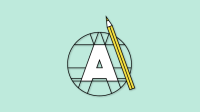New Teachers: Designing Learning Environments
For new teachers, this resource compilation includes tips and guides on classroom design and layout to help maximize the possibilities of the learning environment.
Your content has been saved!
Go to My Saved Content.The Importance of Classroom Design
Why does the physical design of classrooms matter? Mark Phillips discusses this question in "A Place for Learning: The Physical Environment of Classrooms" and offers examples of and resources for turning impersonal spaces into student-friendly havens of learning. For further inspiration, VideoAmy has compiled some videos to help you begin to conceptualize your classroom vision in "Five-Minute Film Festival: Classroom Makeovers." Be sure to take a look at the resource list at the end of her post.
Learning Zones, Seating, and More
For advice about seating arrangements, bulletin boards, and other considerations, Todd Finley has written a helpful overview of some factors to consider related to your classroom design, including information about the research, and links to video tours of exemplary elementary, middle, and high school classrooms. Explore all these tips and videos in "Tips for Creating Wow-Worthy Learning Spaces."
One specific method you can use to organize classroom space involves organizing the learning space into discrete zones with different purposes. Learn more in Veronica Lopez’s "7 Learning Zones Every Classroom Must Have." Consider printing out the 7 Learning Zones poster as an offline reference.
Other Factors to Consider
Does your classroom design take into account opportunities for student creativity? Rafranz Davis discusses how providing students with manipulatives and art supplies can bring excitement, engagement, and elements of a Makerspace into the classroom. Learn more in "Embracing Student Creativity With a Wonder Shelf." Kevin D. Washburn also explores how a variety of available classroom materials can spark exploration, learning, and enrichment in "Looking Around: Creating a Learning Environment (Even Without a Teacher)," from SmartBlog on Education.
Are there any environmental distractions or issues that might derail student attention or make it difficult for particular students to hear or see classroom activities? Ben Johnson discusses how important it is to think about classroom acoustics in "Auditory Awareness: Are Students Hearing the Lesson?" For some additional tips on environmental factors to consider, including information about other potential distractors and lighting considerations, also see Erin Klein’s "3 Quick Tips for a Beautiful, Brain-Friendly Classroom," from Scholastic.
Already working in a classroom and want to explore options for modifying the layout? Several Edutopia bloggers have explored tips and tricks to rethink and remake classrooms. Check out the following posts for help getting started:
- 8 Tips and Tricks to Redesign Your Classroom (Edutopia, Updated 2014)
- Remake Your Class: 6 Steps to Get Started (Edutopia, 2013)
Additional Resources
- For more resources on setting up physical classroom environments, visit Edutopia's Learning Environments page.
- Low on funds or resources? Lily Jones shares some helpful resources in "Countdown to Your First Year: Rounding Up Supplies," from Teaching Channel.
- Looking for additional resources to support new teachers? Visit the "Resources Toolkit for New Teachers" for other curated guides, check out all of Edutopia’s content on the New Teachers page, and participate in discussions for new teachers in Edutopia’s community.
